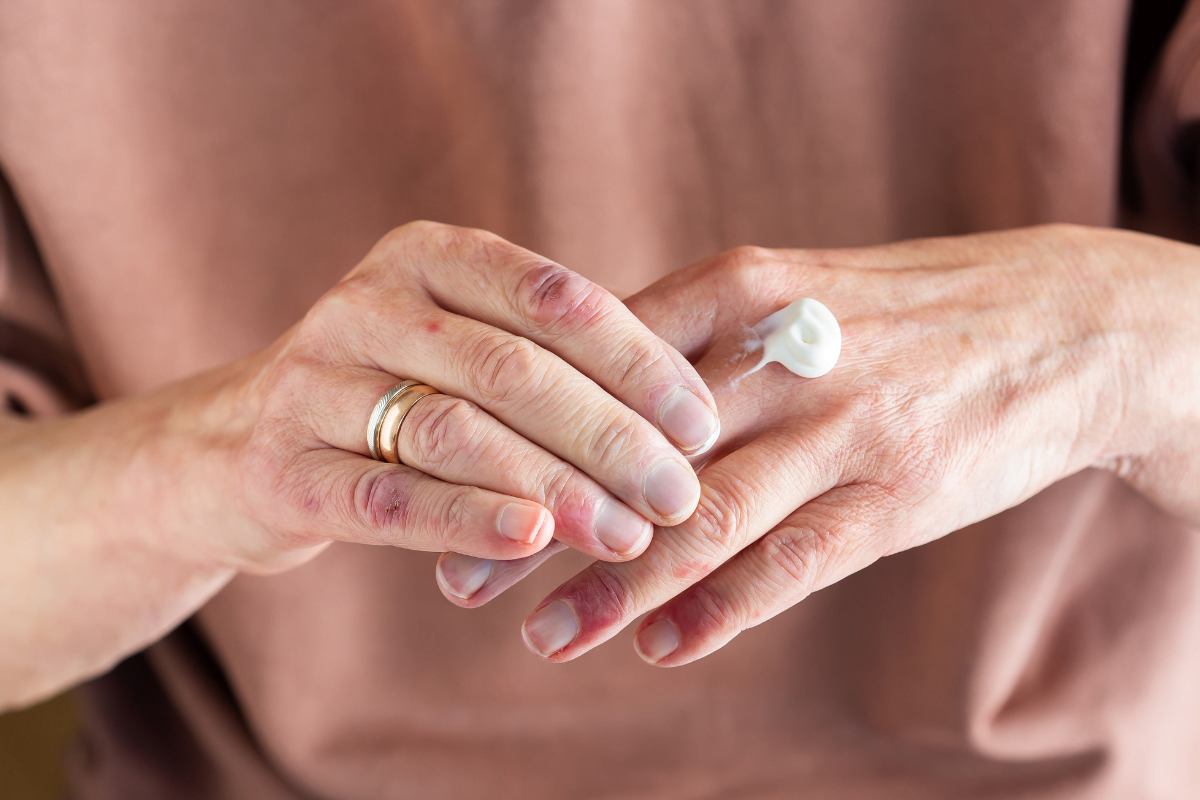When it comes to skin conditions affecting the hands and feet, two of the most commonly discussed are palmoplantar pustulosis (PPP) and dyshidrotic eczema. While they share some similarities, they are distinct conditions with unique characteristics, causes, and treatments. Hence, knowing these key differences is crucial for effective management and treatment.
What is Palmoplantar Pustulosis?
Palmoplantar pustulosis is a chronic skin condition characterized by the appearance of pustules on the palms of the hands and soles of the feet. These pustules are filled with pus and can be painful. Over time, they may develop into larger, scaly plaques. Pictures of palmoplantar pustulosis often show clusters of these pustules, which can help in identifying the condition. It is believed to be an autoimmune disorder, although the exact cause is still unknown.
People with mild palmoplantar pustulosis may experience less severe symptoms, but even mild cases can significantly impact daily activities. Diet may play a role in managing palmoplantar pustulosis, with some individuals finding relief by avoiding certain foods that may trigger flare-ups. Palmoplantar pustulosis treatment typically involves topical steroids, phototherapy, and, in severe cases, systemic medications.
What is Dyshidrotic Eczema?
Dyshidrotic eczema, also known as pompholyx or vesicular eczema, is another skin condition that affects both the hands and the feet of the patient. This condition is characterized by small, itchy blisters that can become quite uncomfortable. Unlike palmoplantar pustulosis, dyshidrotic eczema is often triggered by stress, allergies, or exposure to certain irritants.
Additionally, management of dyshidrotic eczema involves avoiding known triggers, using moisturizers to prevent skin dryness, and applying topical corticosteroids to reduce inflammation. In some cases, phototherapy or oral medications may be necessary to control severe outbreaks.
Comparing the Two Conditions
When comparing palmoplantar pustulosis vs dyshidrotic eczema, there are key differences between the two. Here’s a table showing a more comprehensive distinction between the two:
| Feature | Palmoplantar Pustulosis | Dyshidrotic Eczema |
| Appearance | Pus-filled pustules on palms and soles | Small, itchy blisters on hands and feet |
| Common Triggers | Possibly autoimmune, not well-defined | Stress, allergies, irritants |
| Pain Level | Often painful, pustules can be tender | Itchy, sometimes painful blisters |
| Affected Areas | Palms of hands, soles of feet | Hands, fingers, feet, and toes |
| Chronicity | Chronic, often with recurring flare-ups | Can be chronic but often episodic |
| Treatment Options | Topical steroids, phototherapy, systemic meds | Topical corticosteroids, moisturizers, avoidance of triggers |
| Severity Levels | Mild to severe, with varying symptoms | Mild to severe, with varying symptoms |
| Management | Moisturizers, emollients, biologic therapies | Avoidance of triggers, use of topical treatments |
Both conditions can significantly affect quality of life, making accurate diagnosis and tailored treatment plans essential.
Managing Palmoplantar Pustulosis
Effective management of palmoplantar pustulosis involves a combination of medical treatments and lifestyle adjustments. Patients are often advised to follow a palmoplantar pustulosis diet, avoiding foods that may exacerbate symptoms. Regular use of emollients to keep the skin moisturized, along with prescribed medications, can help manage flare-ups. In severe cases, biologic therapies targeting the immune system may be considered.
Takeaways
Understanding the differences between palmoplantar pustulosis and dyshidrotic eczema is critical for proper diagnosis and treatment. While both conditions affect the hands and feet, their causes, symptoms, and treatments vary significantly. If you suspect you have either condition, consulting a certified dermatologist for an accurate diagnosis and personalized treatment plan is essential. With the right approach, individuals can manage their symptoms and improve their quality of life.
Frequently Asked Questions (FAQs)
Can palmoplantar pustulosis and dyshidrotic eczema occur simultaneously?
Yes, it is possible for an individual to have both conditions simultaneously, although it is rare. A diagnosis by a dermatologist is important to distinguish between the two and develop an effective treatment plan.
How long do flare-ups of palmoplantar pustulosis or dyshidrotic eczema typically last?
Flare-ups of palmoplantar pustulosis can last for weeks or even months, depending on the severity and treatment. Dyshidrotic eczema flare-ups usually last for a few weeks, with proper treatment helping to shorten the duration.
Can these conditions lead to other complications?
Both conditions can lead to secondary infections if the affected skin is scratched or becomes broken. Persistent symptoms can also impact the quality of life of a patient, which is why effective management and treatment are needed.

